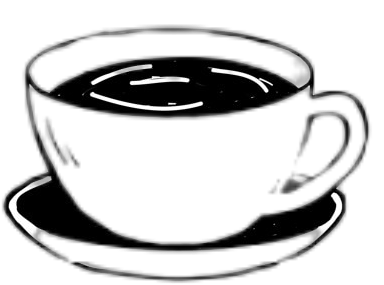As a coffee lover who enjoys everything from a mellow morning brew to an intense shot of espresso, I’ve often asked myself: “What truly sets coffee and espresso apart?” Despite coming from the same beans, these two beverages deliver vastly different experiences in flavor, texture, and caffeine content. Through a deep dive into their preparation, I’ve uncovered the key differences, and I’m excited to share what I’ve learned with you.
While coffee and espresso both originate from ground Arabica or Robusta beans, the way they’re brewed, the grind size, and their caffeine levels all vary. Knowing these differences can help you appreciate the unique qualities of each, whether you're a casual coffee drinker or an espresso enthusiast. If you're looking for an easy way to brew espresso at home, check out the Best Automatic Espresso Machine, or if you prefer a refreshing iced beverage, the Best Iced Coffee Maker might be just what you need. For those who enjoy a smooth and creamy drink, the Best Latte Maker is a great addition to your kitchen.
Brewing Process: The Core Difference
The main distinction between coffee and espresso lies in the brewing method, which impacts flavor, texture, and caffeine concentration.
For standard coffee, methods like drip brewers, pour-overs, or French presses are commonly used. These methods involve hot water slowly passing through coarsely ground beans over several minutes. The result is a milder and less concentrated drink, perfect for those who enjoy sipping their coffee slowly.
Espresso, on the other hand, is brewed under pressure. Espresso machines push hot water through finely ground coffee at roughly 9 bars of pressure. This high-intensity brewing takes about 25-30 seconds, producing a concentrated, rich shot with a velvety texture and that famous crema on top—a golden-brown foam that sits beautifully on the espresso.
In essence, coffee is like a laid-back brew session, while espresso is a fast, intense extraction of flavor.
Grind Size and Preparation: The Essentials
The grind size is critical for both beverages, directly affecting taste. For regular coffee, a coarser grind is used because the slower brewing process ensures balanced flavor extraction without bitterness.
Espresso requires a much finer grind. The tiny coffee particles allow for maximum flavor extraction in a short period, contributing to espresso’s bold, concentrated taste. Using an incorrect grind size can dramatically alter your espresso’s flavor, as I discovered during my early experiments with home brewing.

Flavor Profiles: Smooth vs. Bold
When it comes to taste, coffee and espresso offer contrasting experiences. Coffee’s slower extraction process leads to a smoother, more balanced flavor that is lighter on the palate. This makes it an ideal choice for those who prefer a mellow, easy-drinking beverage.
Espresso, by contrast, delivers a robust and intense flavor, packed into a small, thick shot. Depending on the beans used, espresso can carry earthy, nutty, or fruity notes, but it always delivers a concentrated punch. It’s my go-to when I need something strong and flavorful to kick-start my day.
Caffeine Content: A Misunderstood Difference
A common myth is that espresso contains more caffeine than regular coffee due to its strong flavor. In reality, the caffeine content varies by serving size.
Espresso has around 63 milligrams of caffeine per ounce, while an 8-ounce cup of drip coffee contains about 95 milligrams. Since espresso shots are smaller, coffee drinkers often consume more caffeine overall during the day than espresso drinkers.
When I need a steady energy boost, I opt for coffee. But when I’m craving a quick jolt of caffeine, especially in the afternoon, a shot of espresso hits the spot.
Crema: Espresso’s Signature
One of the standout features of a well-made espresso is the crema—the golden foam that tops the shot. This creamy layer is formed when high pressure emulsifies the coffee’s natural oils, resulting in a smooth, velvety finish.
Regular coffee doesn’t have crema, as it lacks the pressure needed to create it. For me, the crema adds a luxurious touch to espresso, making it feel like a gourmet experience every time.
Versatility: Espresso’s Edge
While regular coffee can be enjoyed on its own or with milk, espresso offers far more versatility. Espresso serves as the base for a wide range of drinks like lattes, cappuccinos, macchiatos, and Americanos. Each of these drinks builds on the boldness of espresso, creating diverse flavors and textures by adding milk, foam, or water. I enjoy experimenting with different espresso-based drinks at home, especially when I want to get creative.

Conclusion
Although coffee and espresso come from the same beans, their brewing methods, grind sizes, and flavors set them apart. Coffee offers a smooth, lighter experience, making it perfect for leisurely sipping. Espresso, with its concentrated brewing process, is bold and versatile, ideal for a quick pick-me-up or as a base for specialty drinks.
Ultimately, the choice between coffee and espresso comes down to personal preference. For a gentle, relaxed drink, coffee is your best bet. But if you’re after something more intense and rich, espresso will hit the mark. Personally, I love embracing both, depending on my mood or the time of day. If you're exploring options like the Philips 5500 LatteGo Review or the Philips 5400 LatteGo Review, you may find that both coffee and espresso are well-represented in these machines, offering you versatility and convenience.
